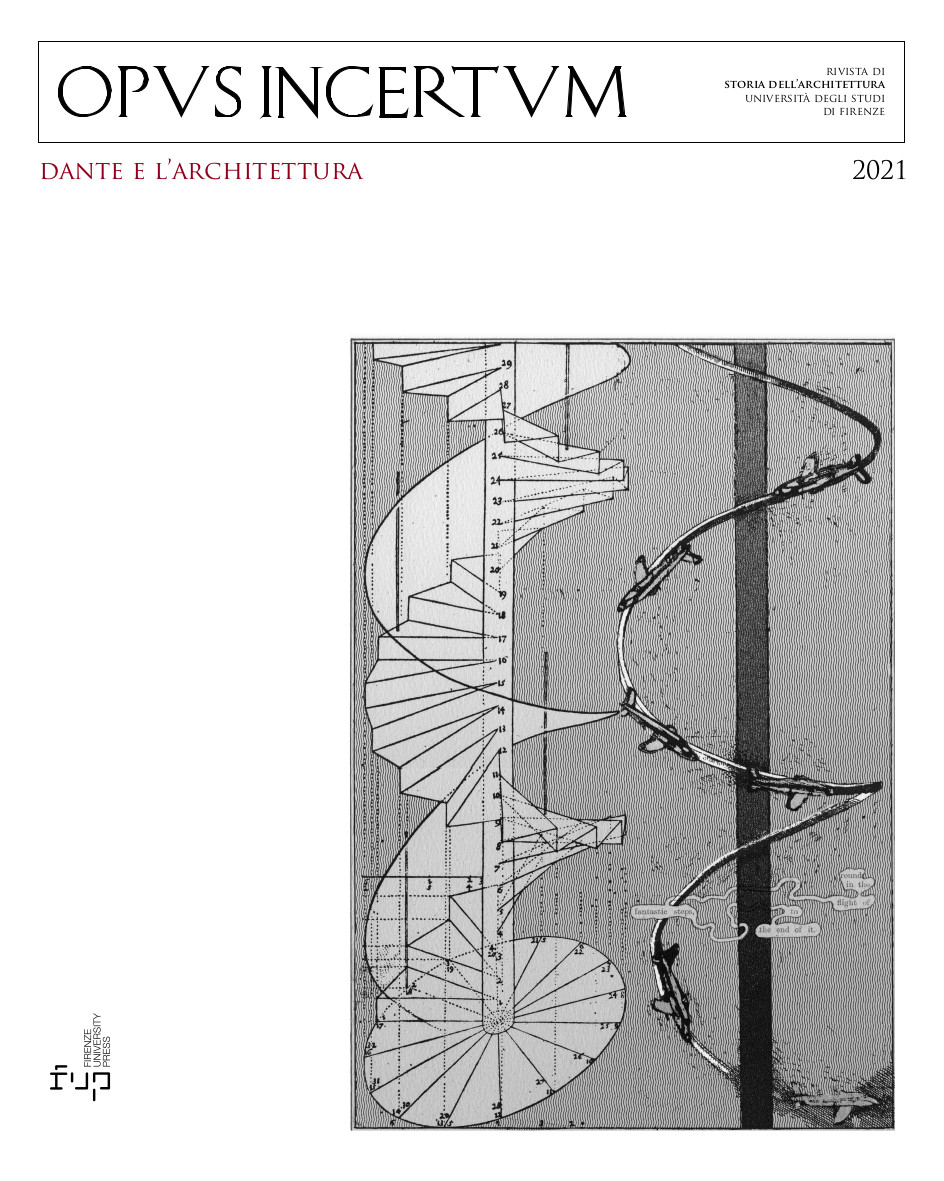Published 2021-12-11
Keywords
- Bramante,
- Belvedere,
- Stairs,
- Dante,
- Commedia
How to Cite
Abstract
The concave-convex staircase located in the exedra at the end of the Belvedere Court has not had the critical fortune that such an original – and problematic – invention would have deserved. On a formal level, the two flights can be schematically associated to a portion of a valley and a hilly formation made of steps. The stair would, therefore, symbolically indicate the shape of the terrain on which the Belvedere is located: the hill with the villa of Pope Innocent VIII on the one side and a “small valley in the middle” (according to Vasari) on the other. The stair could also contain another level of meaning connected to Bramante’s interest in Dante and to his competence as a cosmographer (Sabba Castiglione). The concave flight can be compared to the reconstruction of Dante’s Inferno, represented as an amphitheatre in Antonio Manetti’s version; while the convex section shows a strong similarity with the mountain of Purgatorio. On a planimetric view, the recomposed figure appears as a set of eight concentric circles that correspond to the eight circles of the Paradiso. The staircase would thus embody the specific features of the place where the Belvedere stands, while also creating a connection with Dante’s map of the otherworld.


